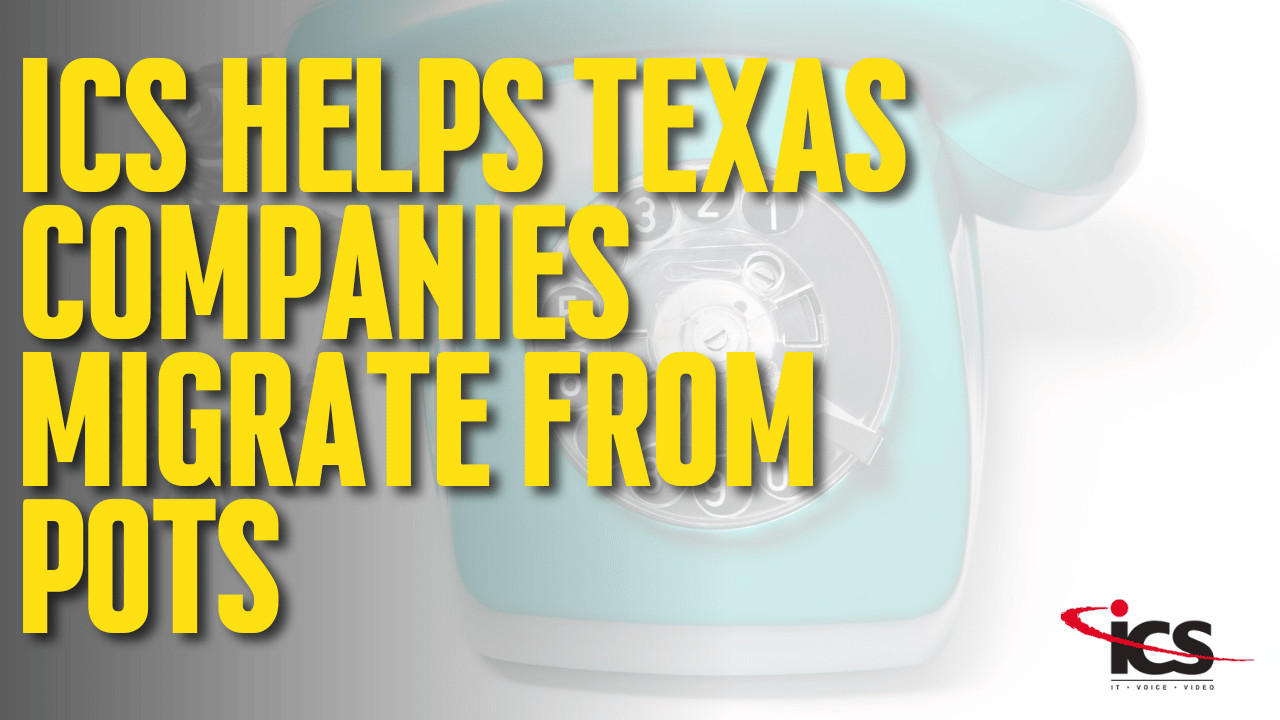Get in touch with us today to find out how can we help you.
FCC Instructs Phone Companies To Phase Out POTS
On August 2, 2022, the Federal Communications Commission’s deadline for the complete phase-out of outdated Plain Old Telephone Service lines will go into effect. Any organization still using these POTS lines could pay a significant monthly fee for their continued use. While POTS lines have been in use for decades, they are now outdated and much less reliable than modern VoIP phone systems.
Additionally, POTS lines cannot support many of the features businesses rely on, such as call forwarding and caller ID. The switch to VoIP is essential for any business still using POTS lines, and the sooner it is made, the better.
Making the switch will save your business money in the long run and ensure you can take advantage of all the latest features and technologies.

What Are POTS Lines?
As technology advances, so do how we communicate. POTS lines, or Plain Old Telephone Service, are quickly becoming a thing of the past. So what are they, and why are they going away? POTS lines are the traditional landline telephone service that uses copper wire to transmit analog signals.
However, with the rise of digital technologies, POTS lines can no longer keep up. They are being replaced by VoIP, or Voice over Internet Protocol, which uses a broadband internet connection to transmit digital signals.
VoIP is more efficient and reliable than POTS and offers several other benefits, such as HD voice quality and call forwarding. If you’re looking to replace your POTS line, a connectivity assessment can help you identify the best option for your needs. Contact us today to learn more.
What Are POTS Lines Used For?
Plain Old Telephone Service lines, or POTS lines, have been used for over 100 years to provide telephone service. These copper-wired lines use analog technology, which is slowly being replaced by digital technologies.
An estimated 36 million POTS lines are still operating, but their lifetime is quickly ending.
The copper wires that makeup POTS lines are expensive to maintain, and the technology can no longer keep up with modern demands. as a result, many telephone companies are phasing out POTS lines in favor of more advanced digital technologies.
While it may be sad to see the end of an era, the reality is that POTS lines are no longer a viable option for telephone service.
POTS (plain old telephone service) lines are the most basic type. They are commonly used in business-related applications, such as for voice phone calls. In addition to their use for voice phone calls, organizations may have POTS lines for the following uses:
- To connect to a private branch exchange (PBX) system
- To connect to a public switched telephone network (PSTN)
- To provide an analog connection for fax machines or modems
- To provide a backup line for voice calls in case of an Internet outage
POTS lines are also commonly used in homes. Residential customers may have POTS lines for the following uses:
- To make and receive voice phone calls
- To connect to a home security system
- To connect to a home alarm system
- To provide an analog connection for a fax machine or modem
Organizations with POTS lines are facing a significant increase in telephone bills starting in August 2022. One line can cost between $65 and $100 per month. However, after August, the cost of a single line could increase to several thousand dollars per month, with some estimates suggesting that some lines could cost as much as $3,000 per month.
This increase is due to a change in how POTS lines are regulated, and it will profoundly impact organizations that rely on these lines for their communication needs. In order to keep their costs under control, organizations will need to start planning how to manage this price increase. One option is to switch to VoIP lines, which are not subject to the same price increases.
However, VoIP lines come with challenges, and it is important to weigh all the options before deciding. Whatever course of action is chosen, it is clear that the rising cost of POTS lines will have a major impact on organizations in the coming years.
Over the past few years, there has been a major shift in how people communicate. With the advent of smartphones and other mobile devices, more and more people are using voice over IP (VoIP) to make calls.
As a result, traditional landline service providers have declined customers. To stay competitive, many providers are now offering VoIP services of their own. However, these new services often come with a monthly fee that can quickly add up.
For businesses and households that rely on landline service, the best solution is to transition to a VoIP provider that offers a flat-rate pricing plan. This will help keep costs down and ensure you always have access to reliable communication services.
Why Are POTS Lines Going Away?
The FCC has found POTS (plain old telephone service) unsustainable for several reasons.
First, POTS increasingly relies on outdated copper wire infrastructure, which is expensive to maintain.
Second, POTS does not support modern communications needs, such as high-speed data or video.
Third, POTS is not universally available; in many rural areas, it is unavailable or only available at high prices.
As a result of these factors, the FCC has concluded that POTS is no longer an adequate solution for meeting the communications needs of consumers and businesses. The FCC is therefore transitioning to a new approach that will provide universal access to advanced communications services.
This transition will require significant investment and effort, but it is necessary to ensure that all Americans have access to 21st-century communications technologies.
Replacement Options For POTS
Starting August 2, 2022, major networks will be allowed to deactivate and/or raise prices on existing POTS lines. If you keep using POTS, you can expect to pay thousands of extra dollars to use them.
This change is because the FCC has decided to allow the major networks to sunset their copper-based infrastructure and move to an all-IP network. This transition has been in the works for several years, and it’s finally coming to fruition.
While the move will offer some advantages, like faster speeds and more reliable service, it will also come at a cost.
ICS Can Help You Transition Away From Your POTS Service
Businesses and organizations across the country are being affected by the Federal Communications Commission’s (FCC) depreciation mandate for Plain Old Telephone Service (POTS) lines. ICS can help determine if your organization is impacted by this mandate and develop a plan to ensure continued communications reliability.
ICS has the experience and knowledge to help you identify where you currently have POTS lines and what needs to be done to maintain reliable communications.
Contact us today to learn more about how we can help you with the FCC’s POTS depreciation mandate.

ICS is a Texas-based 40-year-old technology company specializing in Managed IT, VoIP, Video Conferencing and Video Surveillance solutions for US and International businesses. ICS has over 4000 regional installations and specializes in multi-site businesses between 25 and 2500 employees. ICS’s customers enjoy the experience of ICS’s Total Care program which provides clients flat fee services with obsolescence and growth protection. Whether a customer elects to deploy their IT, Video Conferencing or VoIP in the cloud or on the customer’s premise, ICS can provide a full turn-key solution for our clients under one flat monthly fee.



